Few churches are such perfect primers on Roman art
and architecture. Masters from the Early Renaissance (Pinturicchio,
Bramante), High Renaissance (Raphael) and Baroque (Caravaggio, Bernini)
exercised their genius in all disciplines here: painting, sculpture,
architecture and decoration. It’s also one of the few churches with
major chapels still intact, preserving the artworks that together tell a
complete story (most Italian chapels have been dismantled, their
paintings now in museums). In the Cerasi Chapel, Caravaggio and Caracci
collaborated with a frescoist to create a depiction of Peter, Paul and
Mary and, on the vault, their connections to Heaven. Bernini altered
Raphael’s Chigi Chapel to help clarify the interplay of its art across
the small space.
|
The ghost of Nero, buried in the Domitia family crypt on the Pincio ,
terrorized this neighbourhood in the form of demon crows that lived in a
cursed tree. Pope Paschal II reassured the locals in 1099 by replacing
the tree with a chapel paid for by the people (il popolo).
It was enlarged in 1227 and rebuilt in Lombard style in 1472–7. Andrea
Bregno may have added the Renaissance façade, and Bernini a Baroque
touch to the interior.
|
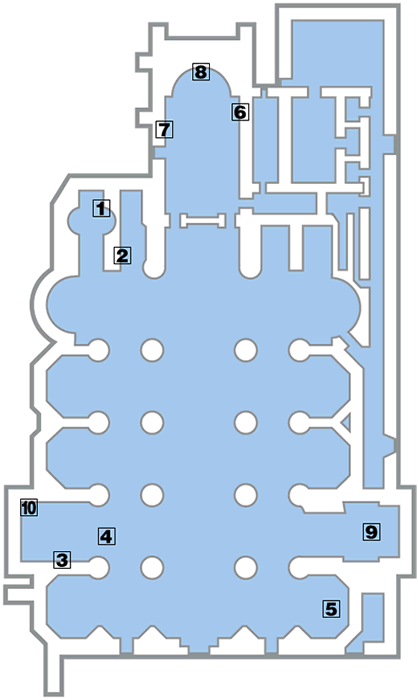
Plan of Santa Maria del Popolo
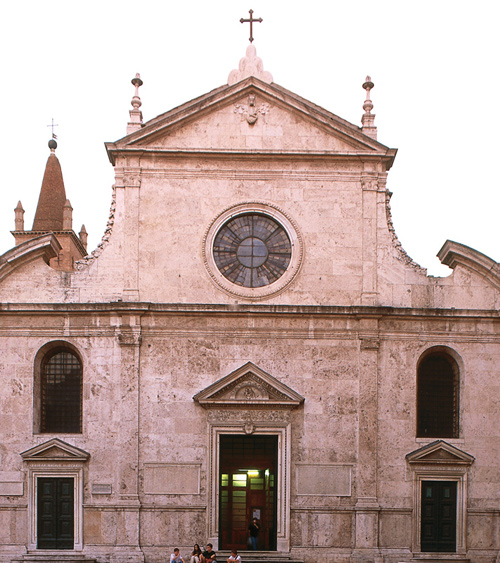
Façade, Santa Maria del Popolo
|
Canova and Rosati cafés are both on Piazza del Popolo.
|
|
|
Some of the church’s
treasures are behind the High Altar in the choir and apse. When mass is
not in session, you are allowed to go behind the curtain to the left of
the altar and switch on the lights in the fuse box to see them.
|
|
Top 10 FeaturesCrucifixion of St Peter Caravaggio has avoided the melodrama and goriness of his earlier works and packed drama into this chiaroscuro
work (1601). The naturalistic figures quietly go about their business,
the tired workers hauling the cross into place, Peter looking sad and
contemplative.
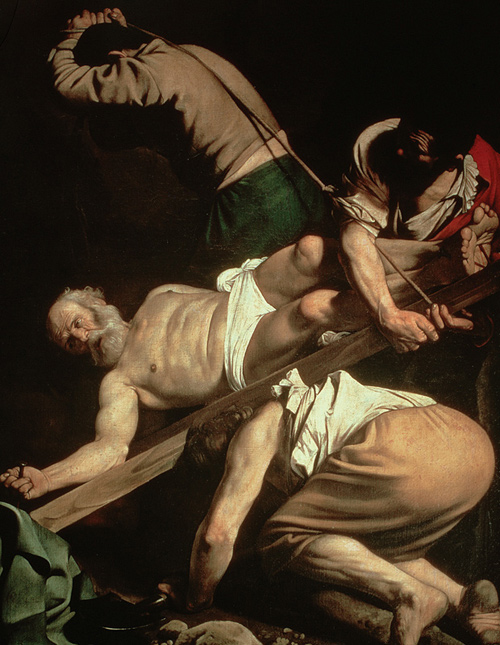
Conversion of St Paul Again, Caravaggio leaves all drama to the effects of light, depicting an awe-struck Paul transfixed by blinding light (1601).

Raphael’s Chigi Chapel Raphael designed this exquisite chapel for papal banker Agostini Chigi, including the frescoes and niche statues (1519–23). Bernini’s Chigi Chapel Cardinal
Fabio Chigi hired Bernini to finish the job begun by Raphael 130 years
earlier. The artist only deviated from the original plan in two Biblical
niche statues.
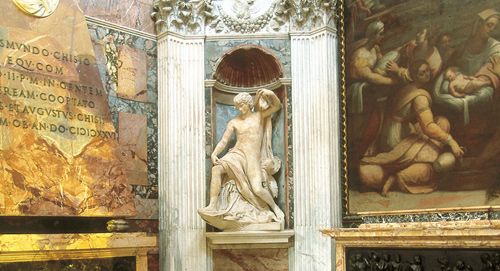
Pinturicchio’s Adoration Raphael’s
elder contemporary retained more of their teacher Perugino’s limpid
Umbrian style in this 1490 work in the della Rovere chapel. Also in the
chapel is Cardinal Cristoforo’s tomb sculpted by Francesco da Sangallo
(1478), while Domenico’s tomb (1477) features a Madonna with Child by Mino da Fiesole. Sansovino Tombs Under
triumphal arch tombs, Tuscan Andrea Sansovino gave a
Renaissance/Etruscan twist to the traditional lying-in-state look (1505–
07). These effigies of Cardinal Girolamo Basso della Rovere and
Cardinal Asciano Sforza recline on cushions as if merely asleep).

Marcillat’s Stained-Glass Window The
only Roman work by Guillaume de Marcillat (1509), the undisputed French
master of stained glass, depicts the Infancy of Christ and Life of the
Virgin.
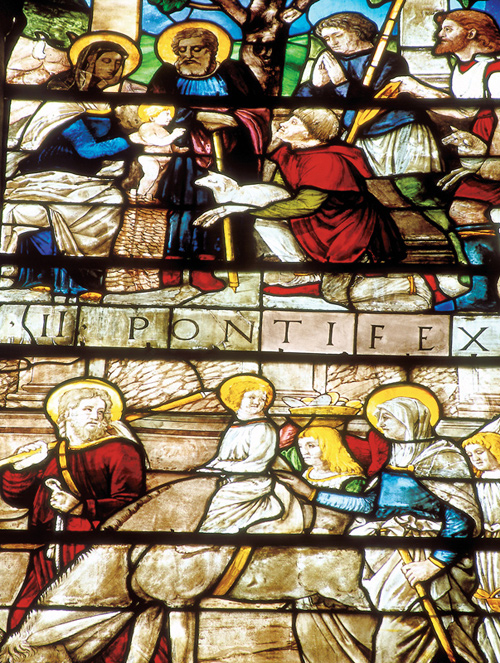
Bramante’s Apse The
Renaissance architect’s first work in Rome, commissioned by Julius II
around 1500, was this beautiful light-filled choir and scallop
shell-shaped apse.
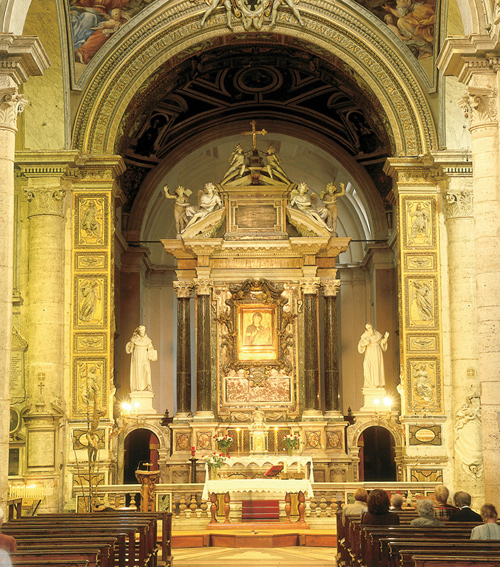
Cybo Chapel Carlo Fontana managed to make this Baroque confection of multicoloured marbles and a Carlo Maratta Immaculate Conception altarpiece blend together in his 1682–7 design. Sebastiano del Piombo’s Nativity of the Virgin This
altarpiece in the Chigi Chapel (1530–34) is in contrast to the dome’s
Neo-pagan themes, the Eternal Father blessing Chigi’s horoscope of
planets symbolized by pagan gods.
|